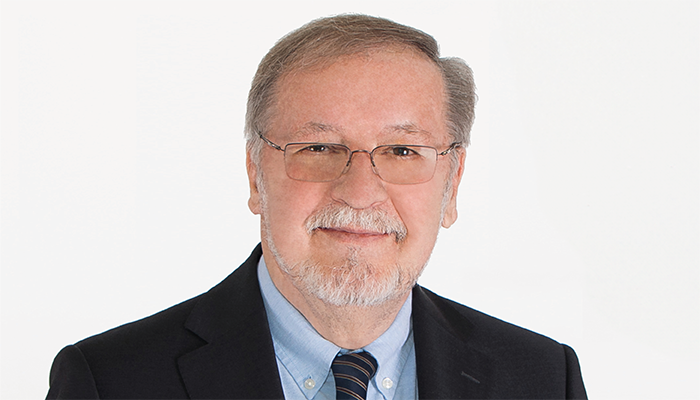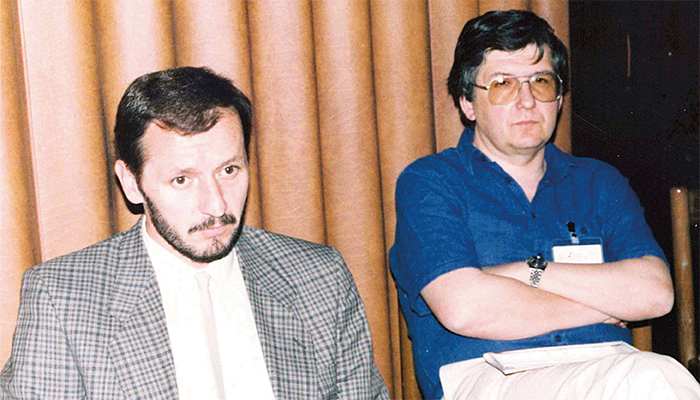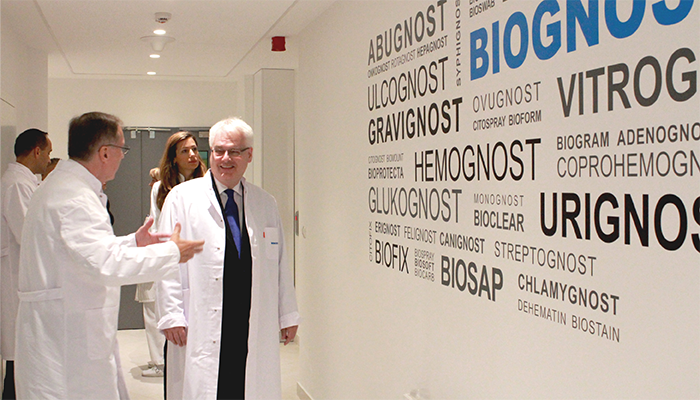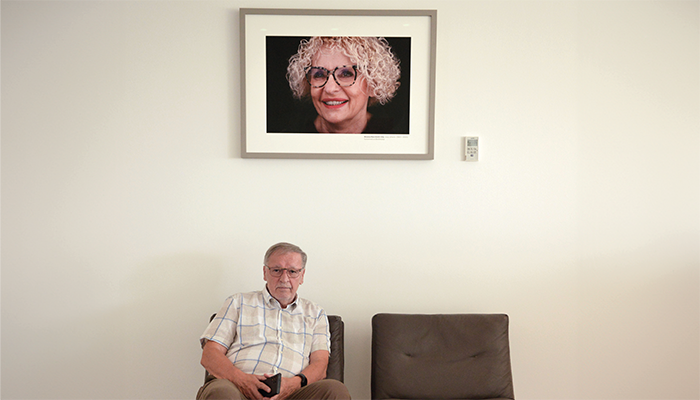
How do you describe yourself, professionally?
I’m a medical doctor turned businessman, who presides over a medical products company in the small European country of Croatia. I founded that company with my wife, Mirjana, some 20 years ago. We started from scratch, using our modest savings and loans from my brother. Today, our company is worth more than 20 million euros, with sales in over 80 countries worldwide.
How did you get into blood banking?
None of the young doctors in my country dreamed of becoming a specialist in blood transfusion medicine – me included. However, as an unemployed doctor, the labor office directed me to a job as a field doctor at the Croatian National Blood Transfusion Center. This involved examining blood donors all over Croatia, wherever the field team went to collect blood.
Thankfully, this experience led to a position at Zagreb’s Institute of Immunology in the Department of Plasmapheresis.
And why did you transition into business?
The Institute of Immunology was well known internationally for the production of biological drugs and vaccines. There, I met my mentor – leading Croatian “transfusiologist” Damir Grgičević. Under his guidance, I fell in love with blood banking and immunohematology, developing a range of diagnostic reagents for transfusion medicine that defined my future scientific and business pathway.
At the same time, when I was 29 years old, I met my future wife, Mirjana, and developed a passion for long distance running and orienteering. The joint influences of my mentor, my wife, and my preoccupation with this unusual sport changed me as a person and were important determinants of my future career.
If you look at my list of publications, you will realize it is short; instead of publishing details about our research, we kept them as professional secrets – using them for the production of reagents. While my colleagues in other departments were counting scientific citations, I was counting the newly developed reagents and orders we received for the products of my research. I realized that I could commercialize my research – my discoveries and innovations in blood banking.
Finally, at the age of 50 – with the help of my wife, who was running a large state pharmacy – I decided to take out a loan and start from scratch in entrepreneurial waters. We believed that it was worth producing immunohematological diagnostics and organizing the management of the company in a modern entrepreneurial way. Without the support of my wife, I probably wouldn't have had enough energy to found BioGnost. Though I was a late-comer to business, my wife and I were confident that we could succeed. I had in-depth knowledge of blood banking and, as a couple, we had managerial and team leadership skills.
BioGnost's product range in the first five years of business consisted mainly of immunohematological reagents for diagnostic application in transfusion centers. Over the next 25 years, we managed to establish our production chain, distribution, and sales of our product locally and internationally, and then branched out into the production of chemicals for immunochromatography, microbiology and, especially, histopathology, that are currently our main export products to over 80 countries around the world on five continents.

How did you manage to survive in the highly competitive blood products market?
Wherever there is money, there is competition; it was necessary to work from early morning until late at night to succeed in the market. At that time, the market was dominated by the American company Ortho. In the international market, we carved a small niche by producing chemicals that were not profitable enough for the megacompanies. Hence, we have less competition from behemoths.
Another aspect that helped BioGnost’s survival was my reputation as a well known and respected transfusion medicine specialist. My customers trusted in my reputation and in the quality of our products.
We had a business strategy that also helped us compete: it was especially important to us to produce a superior anti-D serum that could fully match the quality from Ortho, but at a much lower price.
The secret of the quality of our anti-D reagent was in the addition of polymerized albumin, polyvinylpyrrolidone, and precisely adjusted ionic strength of the reagent, which I studied for two years at the Institute of Immunology and which was the thesis for my Masters degree.
Operating a small company is a risky business everywhere – but especially so in a small country with a minuscule market and high taxes. When I began my business, for every 100 units sold, we had to give 23 percent to the state of Croatia through the state-imposed value added tax (VAT) – which has since risen to 25 percent. Dealing with the state-owned hospitals in Croatia, that are always strapped for cash, was another problem. For almost all our sales to the hospitals we had to wait more than a year to be paid. In fact, paying the VAT and waiting for reimbursement was more burdensome than the investments into the development of marketable products themselves!
Fortunately for us, during the first year of our business, our biggest customer was the Swiss Red Cross, to which we exported our products and serums without the obligation to pay the local VAT. After the war ended in 1995, our Swiss partner helped us to distribute our products to blood transfusion centers in Bosnia and Herzegovina.
What was the strategy around expanding into other reagents, such as urine pregnancy tests and drug testing kits?
My wife was a pharmacist and knew the domestic market for certain medical products. Thus, we decided to produce pregnancy detection kits for sale over the counter in pharmacies. Additional income was realized from this product after we managed to purchase components from a Chinese company, Acon, that had favorable prices for original equipment manufacturers (OEMs). From the same company, we started buying OEM products for drugs of abuse tests (AbuGnost and DOA MultiGnost brands) and we developed strong sales in Croatia and Serbia, especially, because they have established testing programs for narcotic drugs.
The collaboration with Acon naturally led to partnerships with another Chinese company, Citotest, which produced microscope glass slides at incredibly low prices. We helped them to enter the Croatian market, where there was little competition for such products.
Eager to learn more about this market, I bought a few histotechnology books and learned the essentials of histotechnology. Today we have a major production line for histotechnology, which became a major source of our income.

What motivated your research into chemicals that could replace formalin as a fixative?
From the very beginning of the production of histopathological reagents, BioGnost has been trying to replace toxic products with less harmful alternatives.
We first did this with a substitute for xylene, which is used in tissue processing and staining procedures using H&E or Pap techniques. We replaced it with a far less toxic isoparaffinic preparation. Not only did this expand our range, it also improved the working conditions in our own BioGnost laboratories.
Finding a substitute for formalin is a much more difficult challenge. It has always been our desire to expand the range of products and show ourselves as an innovative company with a strong R&D department, but European funds that co-financed innovative development projects with 50 percent of the total costs were additional incentives. First, we secured funding for a small proof-of-concept project lasting 12 months, and found that the use of dialdehyde glyoxal (formaldehyde is an aldehyde) with additional reagents is the most serious candidate to become a formalin substitute.
The challenge is to find a fixative without the toxicity of formalin but with the same characteristics, such that pathologists would not be able to distinguish whether the tissue is fixed in formalin or a substitute. Ideally, procedures and fixation times would not change, and the price would not exceed that of formalin. BioGnost has been working for more than three years to solve these problems.
How difficult was it to transition from a regional to an international market?
We decided to turn to export because of the high VAT that must be paid to the state immediately when selling in Croatia, and the long waits for customer payments. An economic advisor suggested that it would be smarter to start exporting to the world than to wait for the local situation to improve.
He was right; 10 years later the local situation with payments has not changed, and BioGnost’s export of histopathological reagents has exceeded 50 percent of total sales. It took a lot of hard work, but these results are improving year on year, and the company is successfully growing and developing.
Who is the person you would most like to thank, and why?
First and foremost, it is my recently deceased wife Mirjana Marchiotti-Ulip who helped me direct my talents in the right direction and supported me for 45 years in every way – building a large project without the support of my family would certainly not have been possible.

What advice would you give to pathologists with entrepreneurial aspirations?
For me, business is comparable to orienteering – my other big passion. The sport has one overarching goal: to get from start to finish by passing, as quickly as possible, through unknown terrain via 15 to 20 checkpoints, with a map for guidance.
Of course, you need the skills to read the map and the fitness to run along the course, but also decision-making skills to make the best route choice between each checkpoint – often with a lack of oxygen in the brain. The best orienteers/entrepreneurs will be those who have knowledge and agility, but also navigate quickly and confidently from decision to decision, because this is what long-term business success is built on. If you do take a wrong turn, you take a breath and solve the problem to get back on track.
I believe orienteering has given me the skills to make good decisions even in the most difficult situations – ultimately bringing prosperity to the company I lead.




